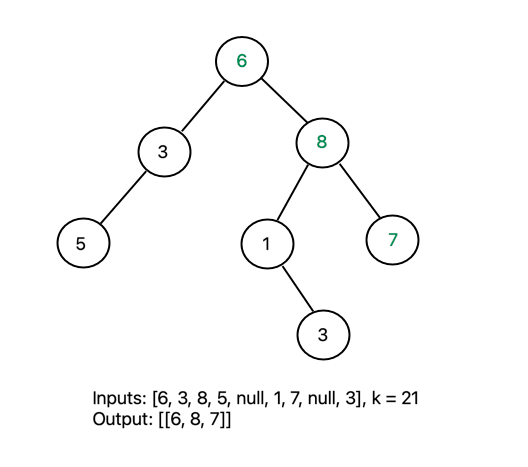Tree and Graph traversal is a popular topic in coding interviews. There are many approaches to graph traversal but one of the most common and important to be familiar with is Depth-First Search (DFS). We'll explore the basic ideas of the algorithm and a few example implementations.
The Basics
Depth-First Search is an algorithm used to traverse graph data structures. It is the order in which the nodes will be visited. As the name implies the traversal is conducted in a depth-first manner, meaning that starting from a certain node we will traverse as deeply into that node as possible before exploring additional nodes. Once a leaf node is found (a node with no children) backtracking will occur until a non-fully explored node is found and the searching will continue in a depth-first manner from there.
Tree Traversal Order
Starting from the root node (6), the left side of the tree is explored to maximum depth before exploring the right. Note that this logic continues from the child nodes as well. From node 8, the left side (8 -> 1 -> 3) is explored prior to the right (8 -> 7).
Non-Tree Traversal Order
DFS can be used with non-tree structures as well. The exploration order may change depending on the starting node and exploration logic, but the concept still holds true. All child nodes are explored to maximum depth before additional nodes are explored.
Implementations
DFS algorithms can be implemented recursively or iteratively using a stack data structure. A recursive implementation utilizes the call stack whereas an iterative solution uses a stack directly. Whilst traversing a graph, nodes are added to the stack and popped off as they are fully explored.
Note: recursive implementations tend to be more common for DFS as they are visually more elegant and straight forward to implement.
Problem
Write an algorithm to check if there are any root to leaf paths where the sum of the path's values equal a given value "k".
class Node {
constructor(val) {
this.val = val
this.left = null
this.right = null
}
}
Solution - Recursive
const hasPath = (node, k) => {
if (node === null) return false
if (node.left === null &&
node.right === null &&
node.val === k) {
return true
}
return hasPath(node.left, k - node.val) ||
hasPath(node.right, k - node.val)
}
Solution - Iterative
const hasPath = (node, k) => {
const stack = [ [node, k ] ]
while (stack.length > 0) {
const [ node, target ] = stack.pop()
if (node.left === null && node.right === null && node.val === target) {
return true
}
if (node.right) {
stack.push([node.right, target - node.val])
}
if (node.left) {
stack.push([node.left, target - node.val])
}
}
return false
}










Latest comments (0)